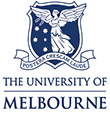A Host-Protein Test for Differentiating Bacterial From Viral Infection: Diagnostic Accuracy in Elderly Patients
Authors:
- Gottlieb, Tanya M.
- Orr, Yaly
- Hamami, Hagai
- Navon, Roy
- Kellerman, Lior
- Eden, Eran
- Haber, Daniel
- Petersiel, Neta
- Neuberger, Ami
- Singer, Adam J.
- Paul, Mical
- Rothman, Richard E.
Details:
JACEP Open, Volume 6, Issue 5, 2025-10-31
Article Link: Click here
Objectives Older adults are vulnerable to infection and are difficult to diagnose. This study assessed the performance of MeMed BV (MMBV), a host-protein test for differentiating bacterial from viral infection, in adults ≥65 years. Methods Post hoc pooled and meta-analysis of adults with suspected acute infections enrolled in 3 prospective studies. MMBV results were interpreted as bacterial/viral/equivocal per manufacturer’s instructions. Reference standard infection etiology was adjudicated by experienced physicians who were blinded to MMBV. Diagnostic accuracy for bacterial infection was calculated for MMBV results (area under the receiver operating characteristic curve [AUC], bin analysis) and for unequivocal MMBV results (sensitivity/specificity). MMBV’s potential impact on antibiotic use was estimated by comparing MMBV-guided decisions to actual practice. Results A total of 754 younger (18-64 years) and 248 older (≥65 years) adults were included. Among older adults, the median age was 75.0 years (IQR, 69.0, 82.0), 53.2% were male, 68.1% were hospitalized, and 79.0% had ≥3 comorbidities. Respiratory tract infections were common (76.2%), and 85.1% were prescribed antibiotics. A total of 111 patients were assigned a bacterial reference standard infection etiology, 77 a viral etiology, and 60 an indeterminate etiology. In pooled analysis, MMBV attained comparable AUC in older (0.95; 95% CI, 0.92-0.98) vs younger adults (0.95; 0.93-0.97). Focusing on older adults, 96.2% (90.3-98.8) sensitivity and 85.7% (74.8-92.5) specificity with 10.6% equivocal results were observed. MMBV could reduce potentially unwarranted antibiotic prescriptions 2.5-fold (from 62.3% to 24.7%; P < .0001). Using a bivariate model, MMBV similarly attained AUC 0.92 (0.81-0.97). Conclusions MMBV demonstrated high diagnostic accuracy in older adults, supporting its potential to optimize antibiotic use in this population. Further studies are needed to evaluate real-world utility.


